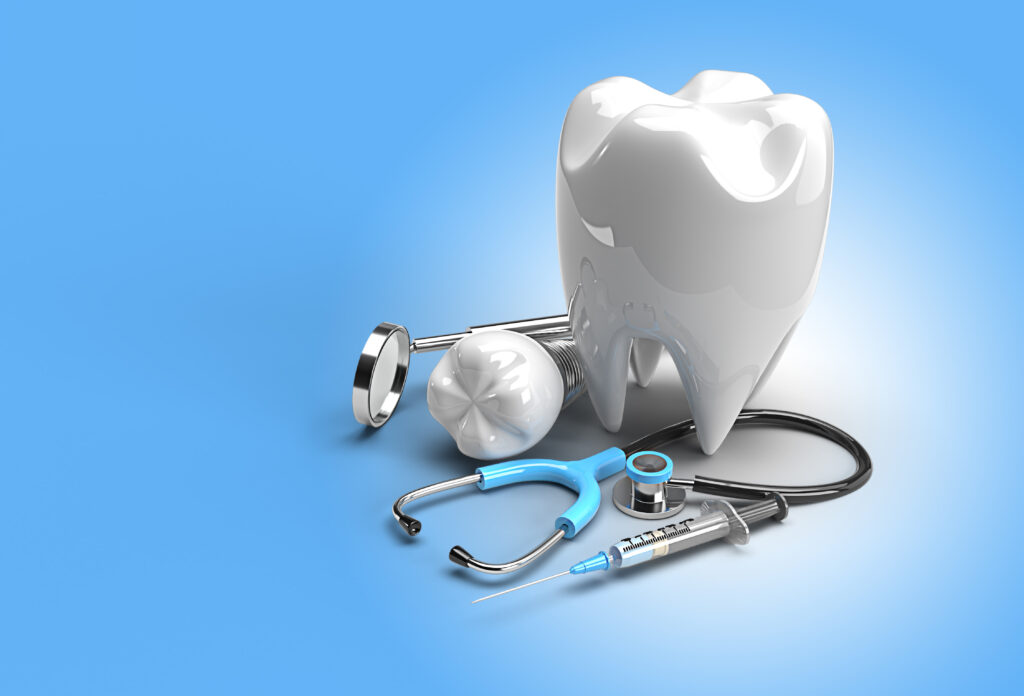With a history of having been the last resort replacement for missing teeth, now, dental implants are regarded as one of the most reliable solutions offering functionality and aesthetics closest to that of natural teeth. Advances in dental technology, as well as the evolution of surgical methods up to 2025, have fine-tuned the implant process further so that it is not only accessible and comfortable but most importantly, durable than ever. In this very informative article, we will get to know what dental implants are, benefits, types, costs, the procedure, recovery, and why they are an excellent choice for tooth replacement.
What Are Dental Implants?
Dental implants are artificial roots of the teeth; they are usually made of titanium and are inserted into the jawbone through surgery. They provide a solid foundation to which prosthetic teeth can be attached, such as crowns, bridges, or dentures. Implants gradually bond to the jaw. This forms a stable foundation that does not lead to the loss of bone and keeps the facial structure intact. Unlike other dentures or bridges, dental implants are non-removable and do not rely on adjacent teeth for support.
Why Do You Need Dental Implants?
Dental implants come with several benefits that are highly attractive to patients and dental practitioners:
- Long-term: Provided proper care, the implants can last for the entire lifetime of a person; they turn out to be a long-term economical solution.
- Natural Look: Dental implants look and feel like natural teeth and, therefore, bring the smile of the patient with no compromise on comfort or aesthetics.
- Bone Preservation: Since the implants are like the roots of the natural teeth, they stimulate the jawbone, preventing the loss of bone that usually occurs after the extraction of a tooth.
- Oral Health: Unlike traditional bridges, dental implants do not require the reduction of adjacent teeth, thus preserving the natural tooth structure.
- Confidence: Implants provide stability and strength, allowing you to eat, speak, and smile without fear of shifting or discomfort.
Types of Dental Implants
There are several kinds of dental implants, and the number continues to expand with the different needs and condition of oral health coupled with jawbones. Of these, some are mentioned briefly below.
1. Endosteal Implants
This type is the most common in general. They can directly be placed inside the jawbone. In general, these are made up of thin, screw-shaped posts with individual crowns or for bridging the missing parts between the teeth. In such cases, where candidates have jawbone structure that can well support the placement of the post, endosteal implantation is recommended.
2. Subperiosteal Implants
Subperiosteal implants place anterior to the jawbone underneath the gum tissue. Its position is well suited for patients who have insufficient jaw bone height, and hence cannot be built with bone grafting. The entire subperiosteal implant stands under the support of gum tissue. This is indicated in those patients who cannot present with more invasive surgical approaches.
3. Zygomatic Implants
These implants are longer, anchored to the cheekbone, also referred to as the zygomatic bone. They are excellent for patients with heavy loss in the upper jaw. Though it is a rather complicated procedure, zygomatic implants can be the option for those who are unable to have bone grafting.
Dental Implant Procedure
The dental implant process involves several stages that each contribute to the successful process of the implant. The following is an outline of these steps:
1. Initial Consultation and Evaluation
The dentist will conduct a general check-up, which will comprise taking X-rays and 3D imaging to evaluate the status of the bone, condition of the gums, and selection of the most appropriate type of implant. In short, the procedure will be customised for your needs and conditions.
2. If there is a need, extraction of the tooth
If the tooth exists, the tooth will first be removed. After this removal of the tooth, some will require a bone graft; this is particularly if the jawbone is not thick enough to hold the implant in place.
3. Bone Grafting (If Required)
Bone grafting is done to build up the jaw where it has degenerated. It becomes strong enough to bear an implant. The bone grafting takes a few months to get fully integrated with the existing bone, and it is an important part of successful implant placement.
4. Implant Placement Surgery
The dentist or oral surgeon places a titanium post in the jawbone during the implant placement. It is usually done under local anesthesia although sedation options are provided for increased comfort. Once placed, time allows the implant to integrate with the jawbone, a process known as osseointegration that may take a few months.
5. Abutment Placement
After osseointegration, an abutment-a small connector attached to the implant-is placed. This abutment will support the replacement tooth and protrudes above the gumline.
6. Crown placement
A specially prepared crown is cemented over a healing gum tissue over an abutment once your gums are healed over this abutment. Then, it will provide the final touch to restoration, perfectly mimicking its color, shape, size, and contour.
Read Also: What are Dental Implants and How Do They Work?
How Much Do Dental Implants Cost?
The price for dental implants varies according to several factors: type, location, the inclusion of additional procedures like a bone grafting, and geographic location. For instance, it is estimated that by the year 2025, it would cost an average between $3,000 to $5,000 for the placement of one single dental implant. Restorations on the entire mouth involve multiple implants in a process which costs an average range between $20,000 to $50,000. Most clinics usually present different financing options or arrangements in place to make the implantations accessible.
Factors Influencing the Cost of Implants
- Type of Implant: Some types, such as zygomatic, are more costly because they require more complex procedures.
- Add-ons procedures: Bone grafts, sinuses lifts, and teeth extractions can all add to the overall cost.
- Material: Pure titanium implants and crowns made of porcelain are usually more expensive but last much longer and are very aesthetically pleasing.
- Dentist’s Experience: Specialists will charge more for the implants, but the success rate will be higher, and the outcome will be better.
Recovery Process
The recovery period of dental implant surgery normally takes a few weeks. However, it will depend on how complex the procedure is and how fast one heals. Here are the major points of recovery:
- Pain Management: There would be some general discomfort, especially with the dissipation of anesthesia effects. Over-the-counter medication for pain and cold compression may help in some swelling or soreness.
- Dietary Changes: Soft food intake would be recommended for the initial days to avoid exerting a lot of pressure on the implant site. Gradual return to regular diet thereafter.
- Oral Hygiene: Good oral hygiene is maintained, but direct brushing on the surgical site is avoided. Instead, an antimicrobial mouthwash is gently rinsed.
- Follow-up Appointments: These are routine check-ups to monitor the healing process and ensure that the implant is integrating well with the jawbone.
Are Dental Implants Right for You?
Dental implants are a good option for many people, but there are some conditions that may impact candidacy:
- Sufficient density in the jawbone: In cases where there is considerable bone loss, you might need to have a graft before placement.
- Health in the gums: Your periodontal health is crucial. It can interfere with the success of implant placement.
- Good oral hygiene commitment: Implants require that you care for them daily as well as regular dental checkup. This will prevent other complications.
- Non-smoker: Smoking can interfere with the healing process and significantly decrease the success rate of implants.
Consult an experienced implant specialist; only then can one get close to reaching a decision on whether it is the best alternative.
Dento Implants in 2025 have remained the most acceptable replacement for a tooth providing long-term benefits to improve the greatly enhanced oral health and appearance, and quality of life. A single missing tooth or full mouth restoration can be transformed with implants with minimal impact on surrounding teeth and jaw bone. Advances in implant technology and techniques make the whole process more efficient and more accessible than ever.




